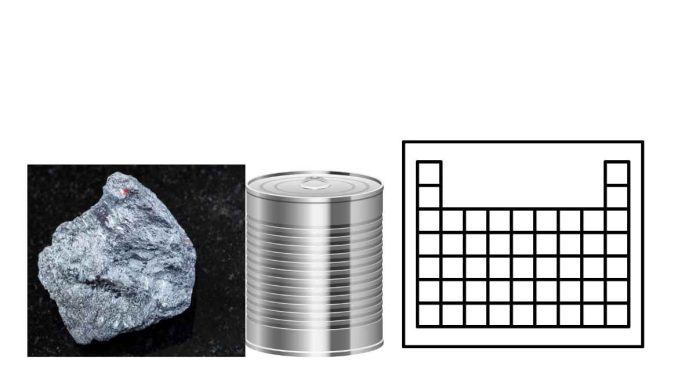No, tin (Sn) and antimony (Sb) are not in the same element group.
Tin (Sn) is in Group 14 of the periodic table, which is the carbon group. Elements in this group have 4 valence electrons.
Antimony (Sb) is in Group 15, which is the nitrogen group. Elements in this group have 5 valence electrons.
Though they are adjacent to each other, tin and antimony belong to different groups and have different chemical properties.
Tin (Sn)
Symbol: Sn
Atomic Number: 50
Group: 14 (Carbon Group)
Period: 5
Category: Post-transition metal
Properties:
Tin is a soft, silvery-white metal.
It has a low melting point compared to many other metals (232°C or 449.6°F).
It is malleable, corrosion-resistant, and non-toxic, which is why it is widely used in coatings (such as tin cans).
Tin is often alloyed with other metals, such as in bronze (copper and tin) and solder (tin and lead, or tin and other metals for electronics).
Tin is typically found in nature as cassiterite (SnO₂), an ore mineral.
Chemical Behavior:
Tin commonly forms two oxidation states: +2 (tin(II)) and +4 (tin(IV)).
Tin (IV) compounds tend to be more stable than tin (II) compounds.
Antimony (Sb)
Symbol: Sb
Atomic Number: 51
Group: 15 (Nitrogen Group)
Period: 5
Category: Metalloids
Properties:
Antimony is a silvery, brittle, and somewhat toxic metalloid.
It has a relatively high melting point (630.5°C or 1167°F).
Antimony is used in flame retardants, lead-acid batteries, and some electronics, as well as in alloys to improve hardness and strength.
It is rarely found in nature in its pure form but is commonly found in ores like stibnite (Sb₂S₃).
Chemical Behavior:
Antimony typically forms two oxidation states: +3 (antimony(III)) and +5 (antimony(V)).
Antimony compounds are often toxic, and the element is used cautiously in industrial applications.
The element shares some properties with both metals and nonmetals due to its position as a metalloid.
Element Group Comparison:
Group 14 (Carbon Group): Elements in this group (carbon, silicon, germanium, tin, and lead) generally have 4 valence electrons. Tin, as a post-transition metal, exhibits metallic properties and is used extensively in alloys and coatings.
Group 15 (Nitrogen Group): Elements in this group (nitrogen, phosphorus, arsenic, antimony, and bismuth) have 5 valence electrons. Antimony, as a metalloid, exhibits properties of both metals and nonmetals and is often used in applications that require flame retardant and alloy enhancement.
Despite being adjacent in the periodic table, tin and antimony differ significantly in terms of their chemical behavior, their applications, and their properties due to their placement in different element groups.


